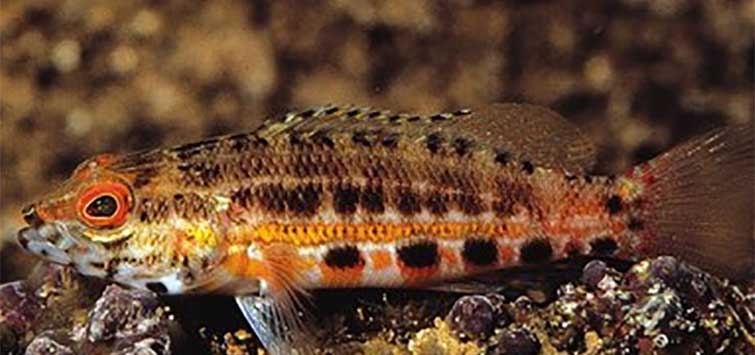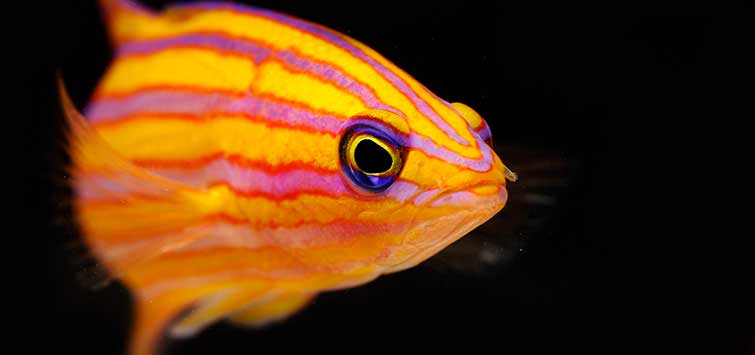Serranus baldwini
Common Names: Lantern bass, lantern basslet, Baldwin’s serranid, Baldwin’s dwarf basslet
Type Locality: Culebra Island, Puerto Rico, USA
Range: Western Atlantic: Florida and Bahamas to southeastern Brazil
Taxonomic Troubles: There must be an interesting story here, since the original description is listed as Prionodes baldwini EVERMANN & MARSH 1899. They apparently changed their minds rather quickly.
Size: 8 cm (3 inches).
Preferred Water Chemistry: Tropical marine.
Difficulty: Very hardy. Fairly aggressive and will definitely eat very small ornamental crustaceans and fish, its natural diet in the wild. In a large tank multiple specimens introduced simultaneously will usually establish a stable hierarchy.
Tank Setup: There must be plenty of hiding places, making it an ideal choice for a reef tank—provided there are no fish or motile invertebrates small enough to be eaten by the bass. Generally safe with sessile invertebrates.
Feeding: Carnivorous. Should have meaty foods. Can be trained easily to accept the usual aquarium fare. Description: A very attractive little fish with white, black, and orange arranged largely in square blotches. A typical streamlined bass-shaped body.
Breeding: No records of successful captive propagation. It is a synchronous hermaphrodite, meaning every specimen can take male or female role when spawning.
Fish Description
This is an excellent beginner’s fish. It makes a colorful and active addition to a FOWLR system or a reef tank without small ornamental invertebrates. Aside from its hardiness, beauty, and ease of care, it is a Caribbean species and therefore does not have to endure lengthy shipping to reach dealers in the United States. Several of its close relatives are also popular, but S. baldwini has the advantage of being one of the smallest in the group, meaning it can be housed in tanks of 30 gallons or more. As long as it is kept with tankmates that will stand up for themselves, it is perfect for most marine setups.

.png?h=595&iar=0&w=2781&hash=5FD5E69473BCC22199FBFA2FB71B6033)



